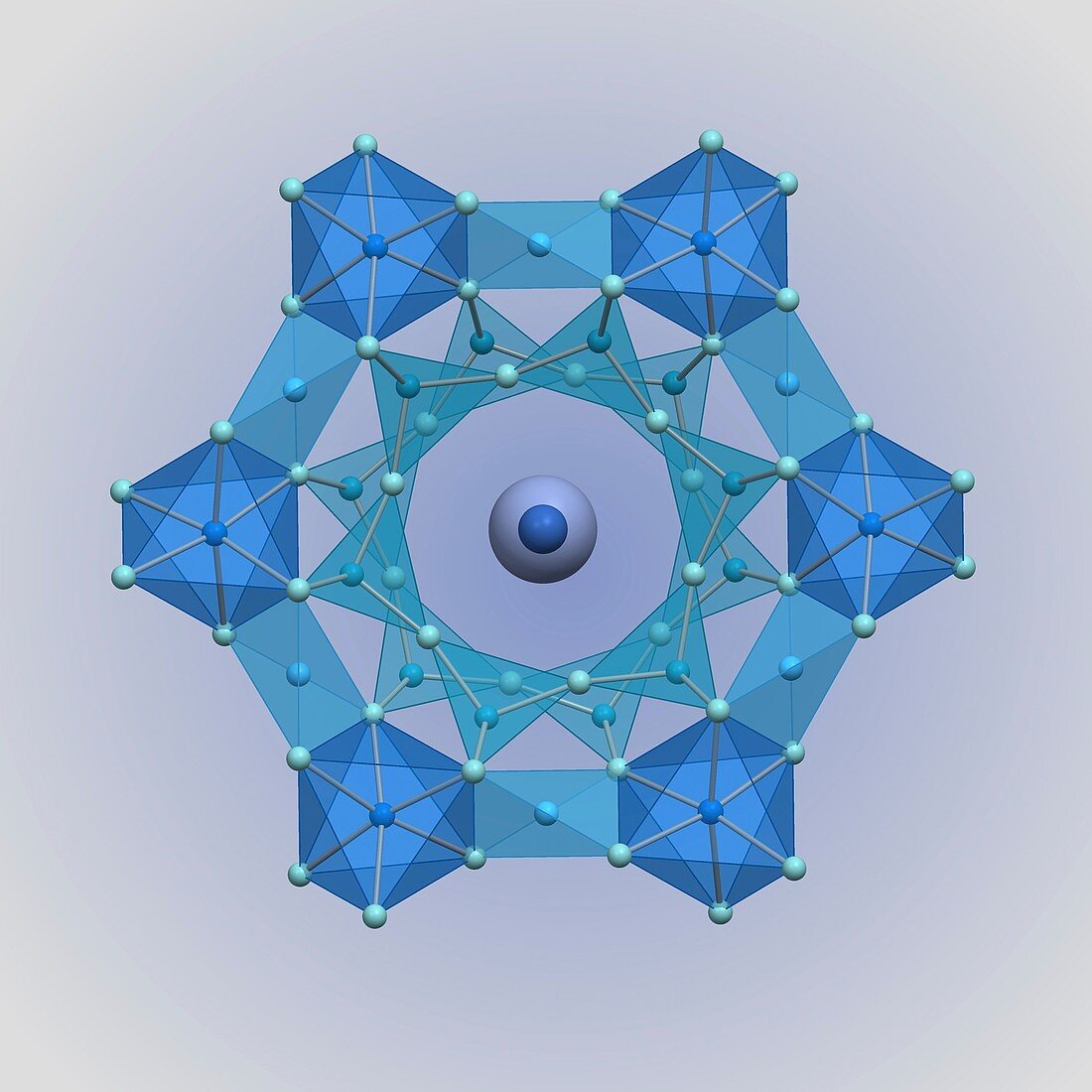Crystal symmetry of aquamarine
Bildnummer 12539286

| Crystal symmetry of aquamarine, illustration. Aquamarine is a variety of beryl, a mineral built around 12-membered crown-shaped rings of six tetrahedral silicon atoms alternating with six bridging oxygen atoms (lightest blue). Each silicon atom is also bonded to two other oxygen atoms that are shared with beryllium(2+) and aluminium(3+) cations. These metal ions form a second ring that encloses the first. The outer ring has six aluminium oxide (AlO6) octahedra (dark blue) alternating with six tetrahedral beryllium oxides (BeO4) groups. The rings create channels that contain Group 1 cations, caesium(+) (larger) and sodium(+) (darker). Pure beryl is colourless, but trace amounts of impurities give coloured gemstones. Aquamarine, is a pale blue form of beryl contaminated with iron(2+) in some of the aluminium(3+) sites. The green emerald has chromium(3+) impurities; iron(3+) impurities give heliodor, a golden form of beryl, and morganite is pink due to manganese(2+). | |
| Lizenzart: | Lizenzpflichtig |
| Credit: | Science Photo Library / GREG WILLIAMS |
| Bildgröße: | 4180 px × 4180 px |
| Modell-Rechte: | nicht erforderlich |
| Eigentums-Rechte: | nicht erforderlich |
| Restrictions: | - |
Preise für dieses Bild ab 15 €
Universitäten & Organisationen
(Informationsmaterial Digital, Informationsmaterial Print, Lehrmaterial Digital etc.)
ab 15 €
Redaktionell
(Bücher, Bücher: Sach- und Fachliteratur, Digitale Medien (redaktionell) etc.)
ab 30 €
Werbung
(Anzeigen, Aussenwerbung, Digitale Medien, Fernsehwerbung, Karten, Werbemittel, Zeitschriften etc.)
ab 55 €
Handelsprodukte
(bedruckte Textilie, Kalender, Postkarte, Grußkarte, Verpackung etc.)
ab 75 €
Pauschalpreise
Rechtepakete für die unbeschränkte Bildnutzung in Print oder Online
ab 495 €
